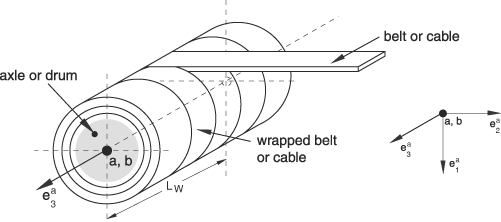FLOW-CONVERTER | |||||||||
|
| ||||||||
ProductsAbaqus/StandardAbaqus/ExplicitAbaqus/CAE
Description

The FLOW-CONVERTER connection constrains the relative rotation between the two nodes about the third local direction, , to the material flow at node b, . The constraint can be written as
where is the relative nodal rotation between node a andb and is a scaling factor specified as part of the associated connector section definition. By default, . The local direction rotates with the nodal rotation at node a.
There are no available components of relative motion for this connection type; hence, kinetic behavior cannot be specified. However, the following kinematic quantities are available for output:
which will be output as CPR1 and CPR2, respectively.
The constraint moment is
![]()
Limitation
At most two FLOW-CONVERTER connectors can share their second node where degree of freedom 10 is active.
![]()
Summary
| ||||||||||||||||||||||||